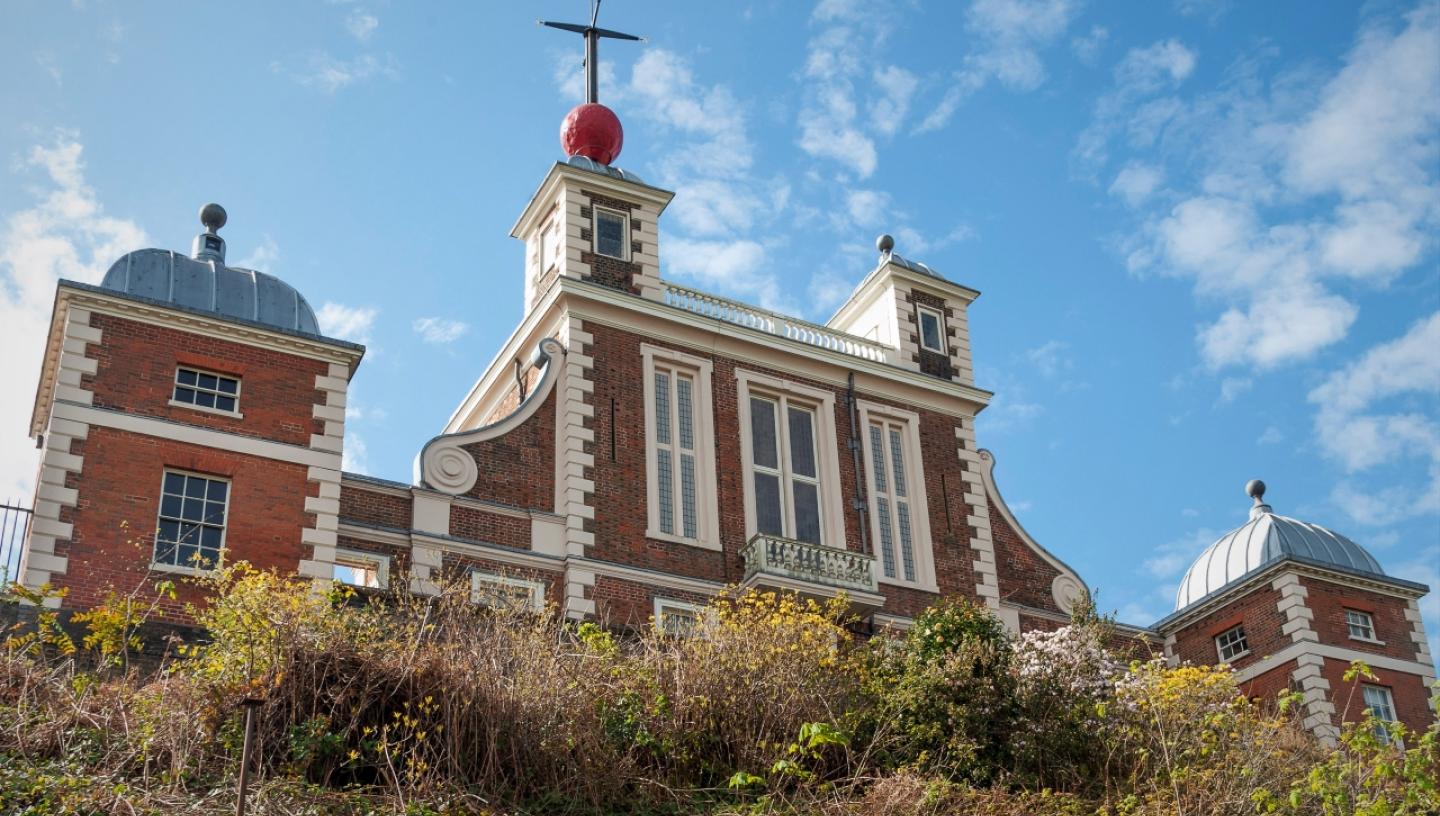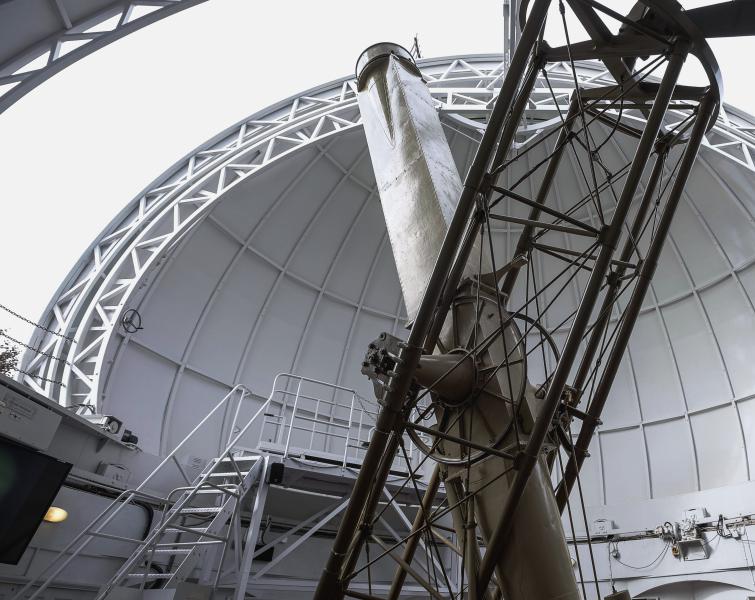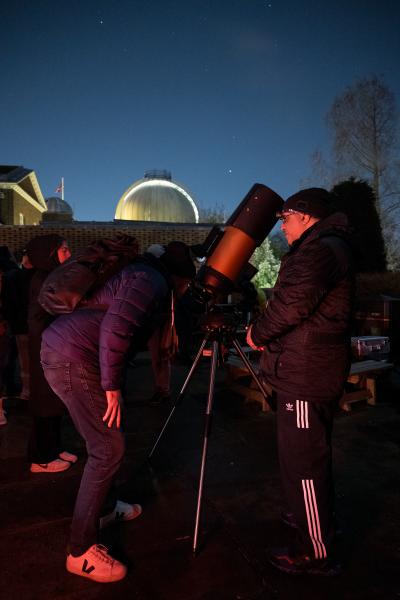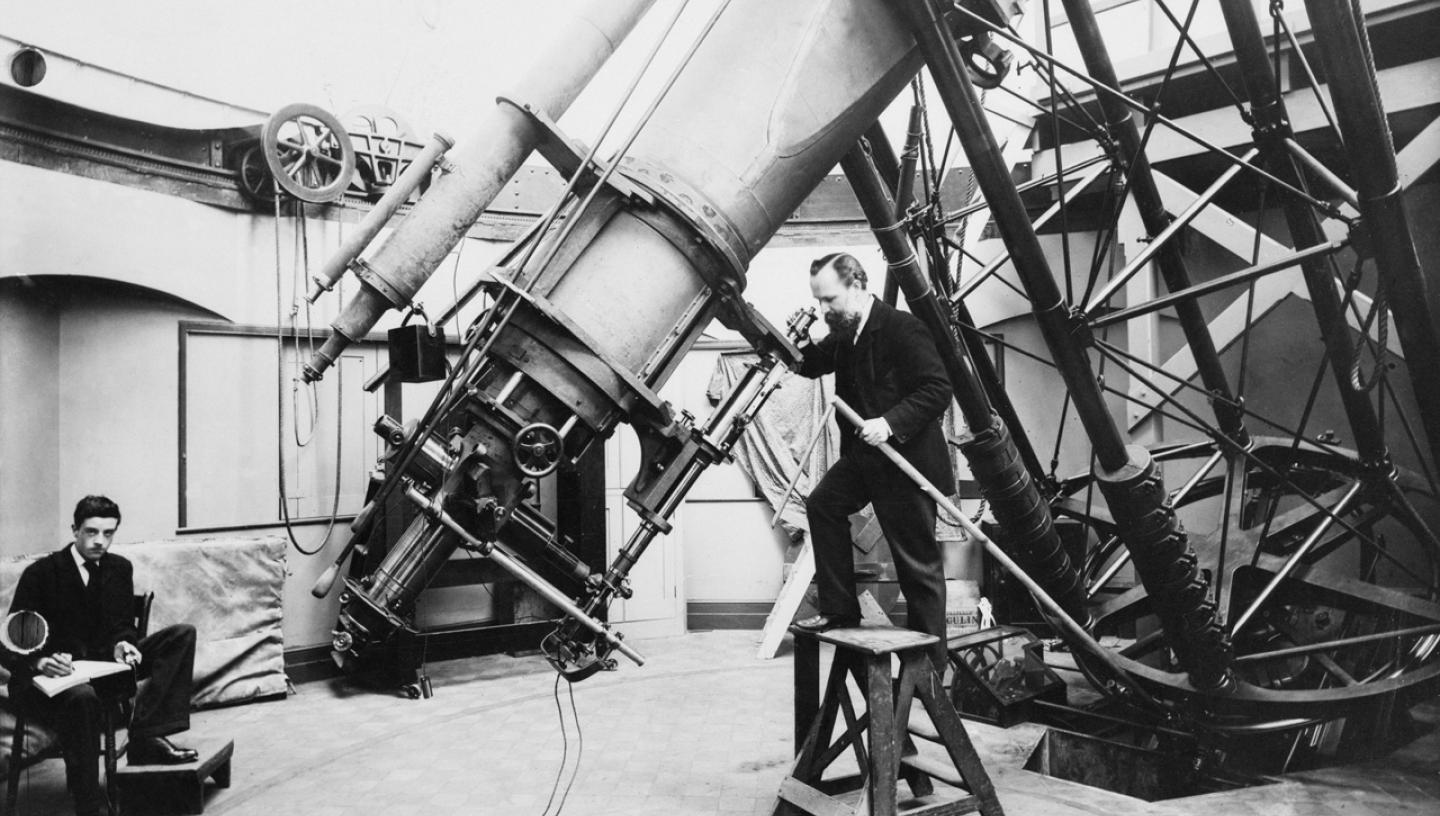
The 28-inch Greenwich refracting telescope is the largest of its kind in the UK.
It was commissioned in 1885 by Astronomer Royal William Christie, and built by the Grubb Telescope Company in Dublin. The telescope was finally installed in 1893.
Learn more about its history below.
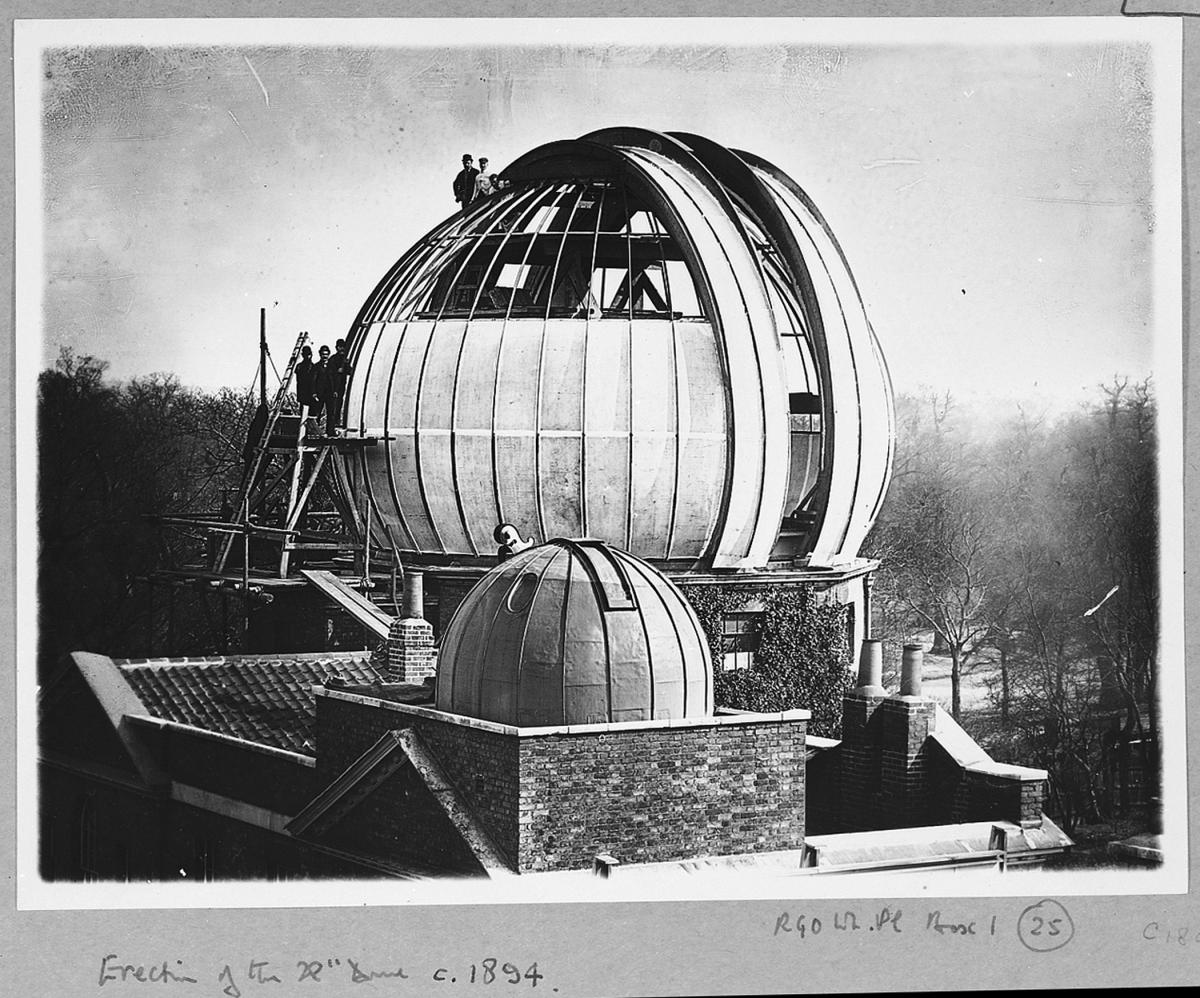
Construction begins
The Great Equatorial Telescope was designed to keep the Royal Observatory at the forefront of contemporary astronomy and more active in the growing disciplines of astrophysics and photography.
The job of constructing the telescope was given to Howard Grubb, an Irish optical manufacturer who was then the world leader in the field.
Work began on the new 'onion dome' roof to house the telescope in 1892, and the telescope was installed a year later.
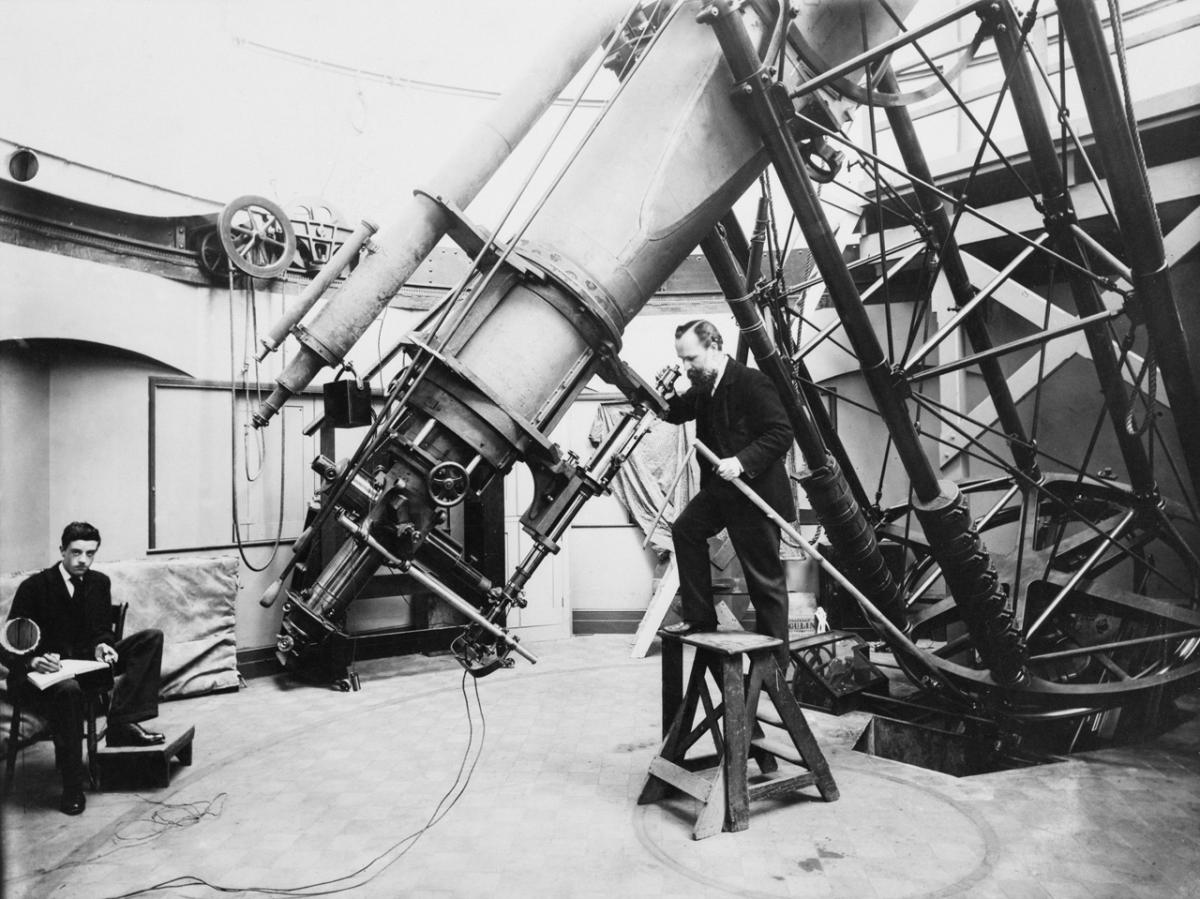
Pioneering research
The 28-inch lens was to be of revolutionary design, allowing the telescope to perform as an observational and photographic instrument.
After detailed testing however, the proposed role of the Great Equatorial Telescope was changed. Its new main purpose would be to observe and measure 'double stars', planets and comets. This is continued to do for more than 70 years.
In 1925 King George V and Queen Mary visited Greenwich to mark 250 years of the Royal Observatory. Pathé news footage captured the royal couple as they toured the Observatory grounds.
The footage shows how the Great Equatorial Telescope would have looked during observing programmes, including the mattress provided for astronomers positioned directly beneath the telescope eyepiece.

What are double stars?
Double or binary stars are stars that share a common centre of gravity and are in orbit around that centre.
Little was known about the nature of stars in the 19th century, and the idea that they could be associated physically as well as visually was new. Today it is known that at least 50 per cent of stars are binary stars in orbit around one another.
Measurement of the orbits of binary stars allows their masses to be determined by applying Newton's Law of Gravitation. This is the only method by which astronomers can directly measure the masses of stars.
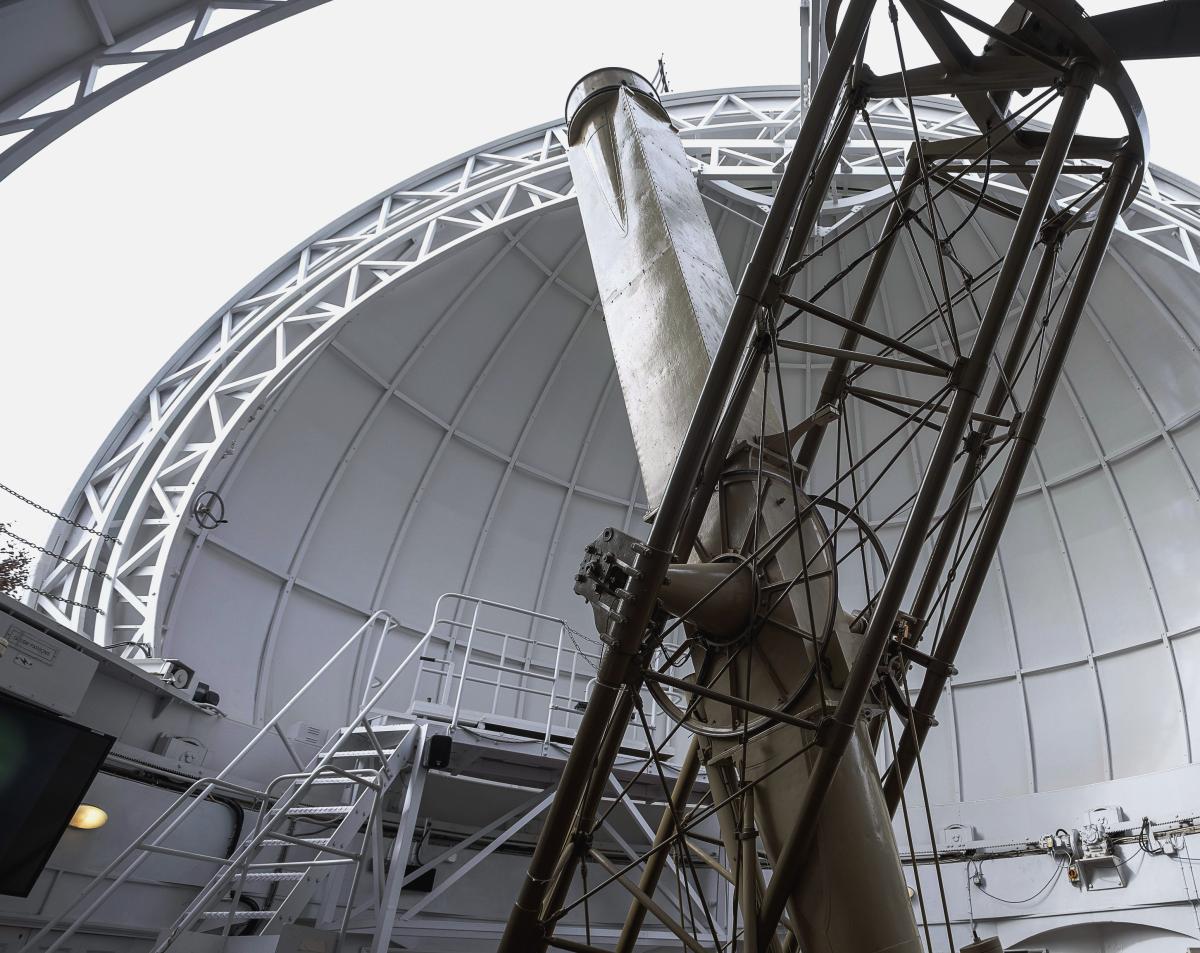
A strange shape
The mount for the Great Equatorial Telescope had originally been built for an earlier, smaller instrument. Because of this, the new telescope had to be tapered in the middle in order to fit between the mount's central spokes. This is why the telescope is round at each end but rectangular in the middle.
Unlike the fixed telescopes elsewhere in the Observatory, the Great Equatorial Telescope can be rotated from east to west to keep it moving in sync with the stars. It is aligned with the Earth’s axis, and moves parallel to the celestial equator — hence the name.
Starlight is collected by the huge 28-inch (71 cm) diameter lens and then focused down to the eyepiece.

The onion dome
The distinctive 'onion dome' roof was designed specifically to house the Great Equatorial Telescope.
The original dome construction was a riveted iron frame covered with papier mâché. At its widest, the dome bulges out about 1.5 metres (5 feet) beyond the Observatory walls.

War disrupts observations
Twice in its history, observations with the Great Equatorial Telescope have been disturbed.
The first time was during the First World War. Then, with the outbreak of the Second World War in 1939, the valuable object glass was removed and sent to a place of safety.
This was just as well. The Observatory was damaged by bombing during the war, and in 1944 the covering of the dome itself was almost completely destroyed by a V1 flying bomb.
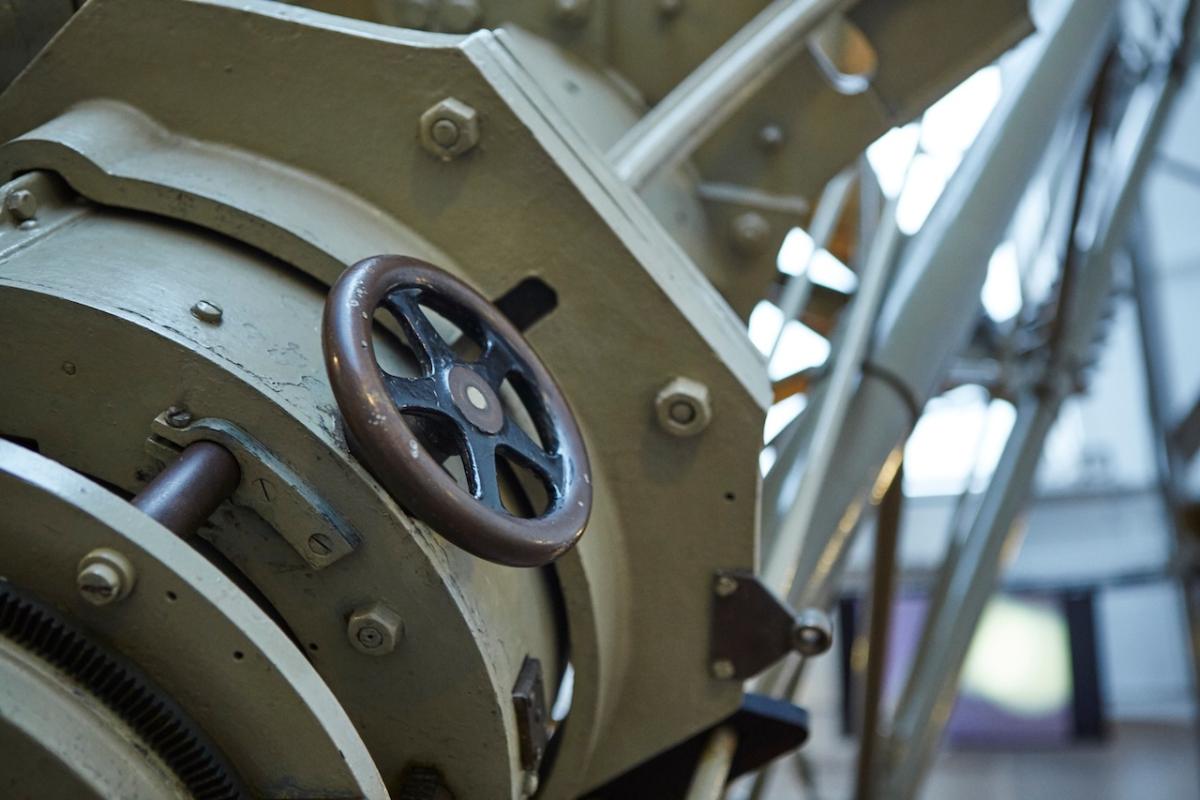
A new home in Sussex
In 1947, the telescope was dismantled and sent to the Royal Observatory's new home at Herstmonceux in Sussex, away from the smoke and light pollution of London.
It continued to be used for research, before eventually being 'retired' in 1970.
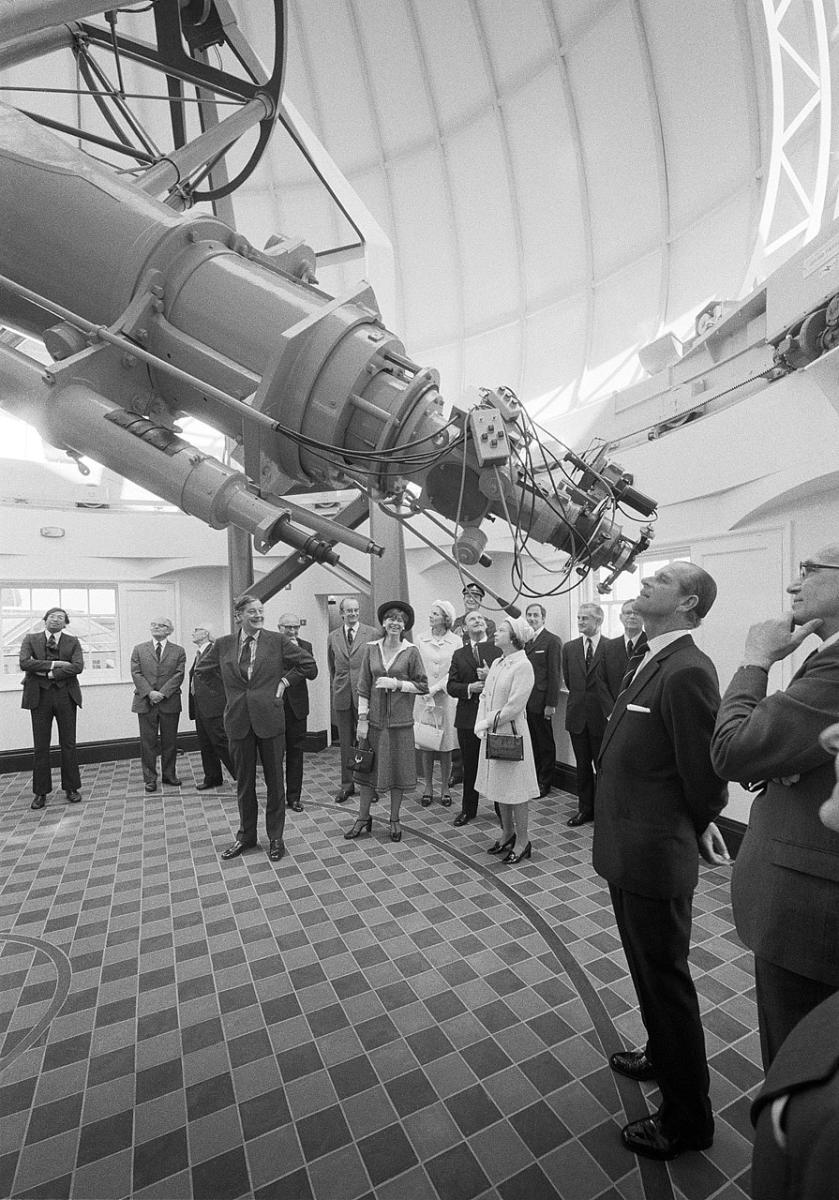
A royal return to Greenwich
The telescope was returned to Greenwich in 1971.
The BBC's Sky at Night programme captured the moment the telescope was lifted back into place, with presenter Sir Patrick Moore declaring, 'The great 28-inch telescope is coming home where it belongs'.
In 1975 the Great Equatorial Telescope was officially opened to the public by the Queen and the Duke of Edinburgh.
Since then it has become a central part of educational programmes at the Royal Observatory. With the recent addition of a computer-aided guidance system and CCD camera, it continues to work as an excellent visual aid to observing the night sky.
